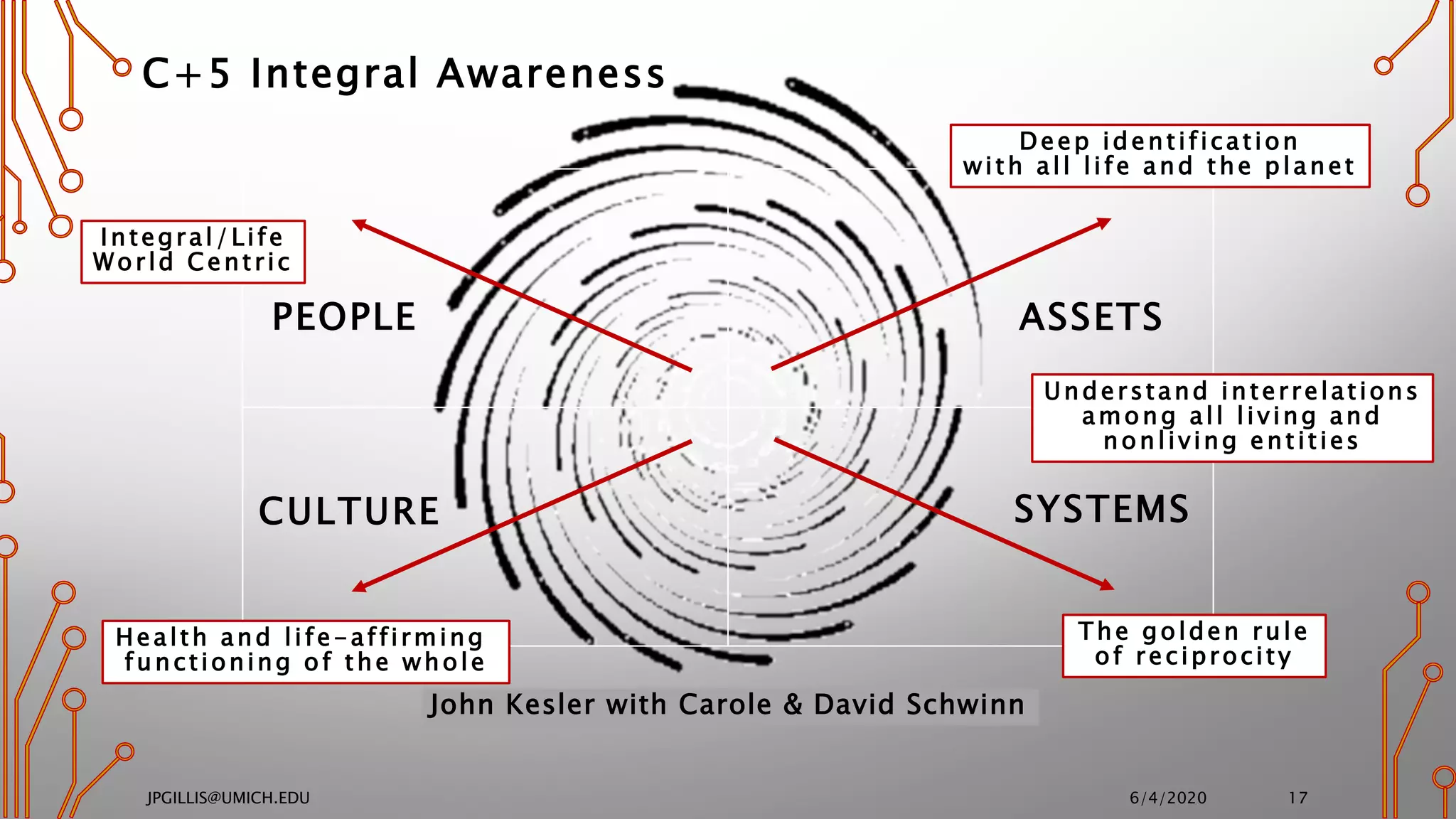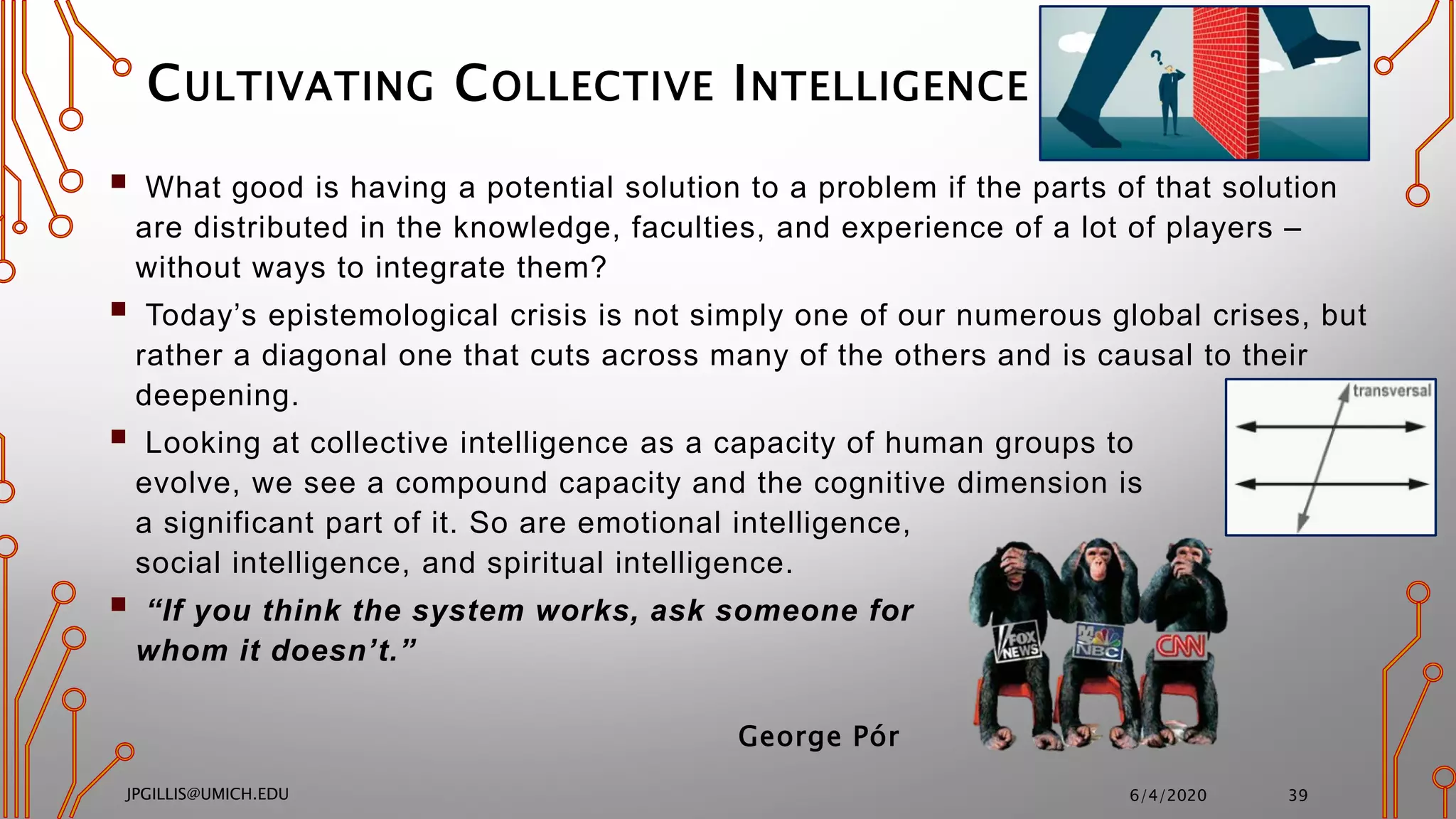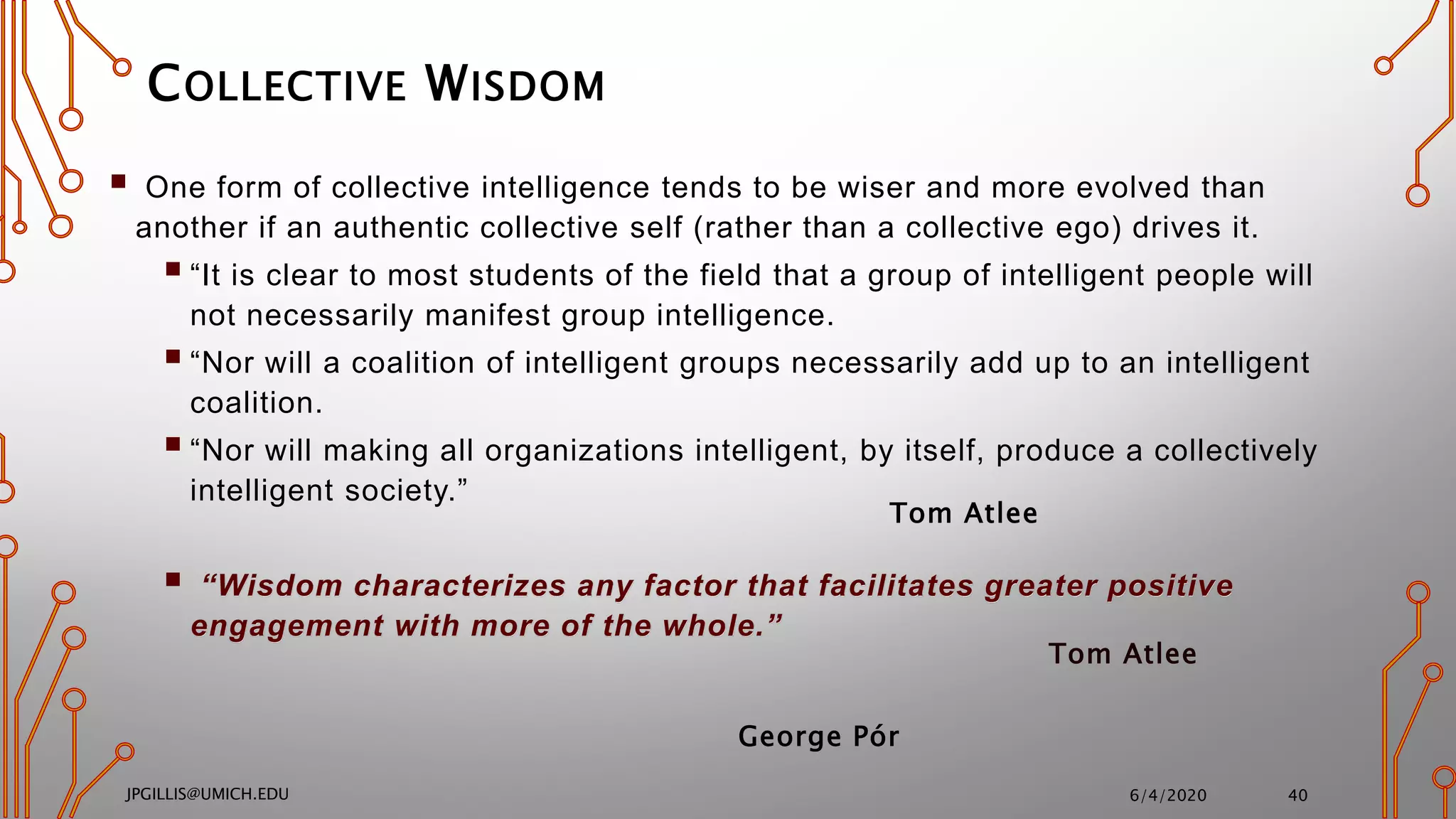The document explores the concept of collective intelligence and the application of mindfulness at societal levels to address trans-institutional issues that humanity faces. It emphasizes the importance of cooperation among various sectors, including governments and non-profits, to tackle challenges such as sustainable development and democracy. Additionally, it discusses the potential of digital platforms to foster collaboration and dialogue, highlighting the need for open and engaging communication structures to improve decision-making and learning processes.















































































![THE COLLABORATORIUM…MARK KLEIN, ET AL.
The Collaboratorium has basic functions (email, user home pages, watchlists,
search functions, browse histories, etc.) and uses a “Discussion Forum” as the
primary user interface.
It structurally addresses the fruitless “edit wars.” (divergent
perspectives are not forced to compete for dominance in a
single post.
It provides search tools that help users find the issue tree
branches (and more active branches are displayed in a larger font).
Editors (selected based on argument-mapping skills and ability to maintain a
content-neutral POV) are empowered to [re-]structure entries, if necessary.
A small cadre of domain experts creates an initial argument structure designed
to present critical issues and options in an “intuitively-organized” way. This
“skeleton” can then be fleshed out and modified by the full user community.
6/4/2020JPGILLIS@UMICH.EDU 80
Mark Klein](https://image.slidesharecdn.com/collectiveintelligenceg-200616142807/75/Collective-intelligence-g-80-2048.jpg)











